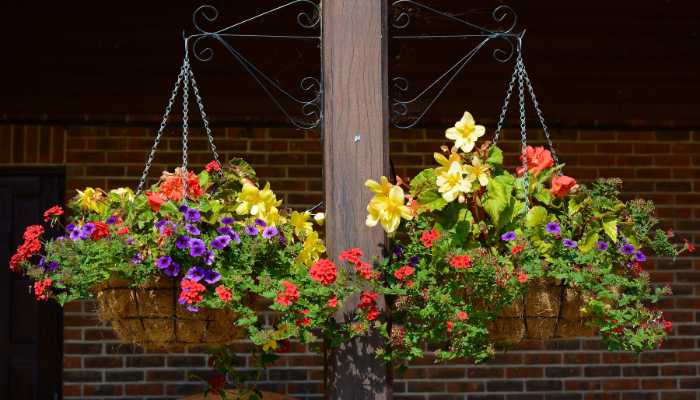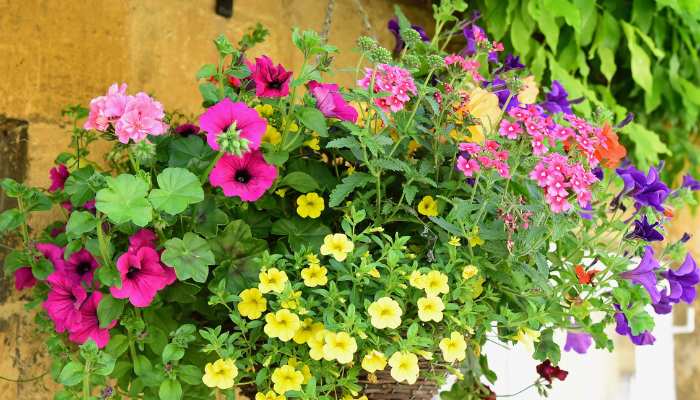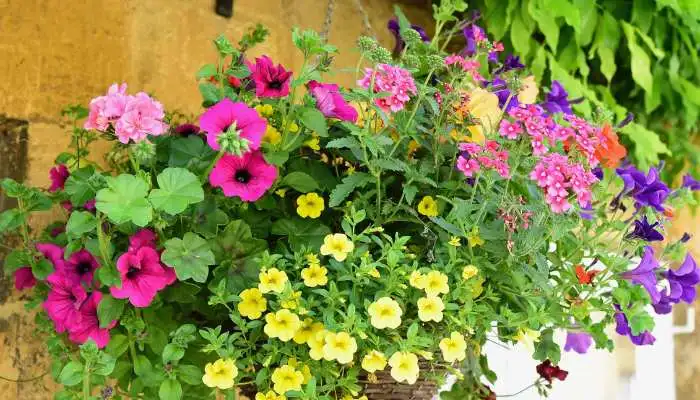If you’re looking to add a splash of vibrant colour and a touch of elegance to your outdoor space, hanging baskets filled with lantana could be your perfect solution.
These hardy, low-maintenance plants offer a stunning display of blooms that can brighten up any area. But with so many varieties available, which ones are the best for hanging baskets?
In this guide, we’ll delve into the best lantana for hanging baskets, helping you choose the ideal types for your needs.
Table of Contents
Why Choose Lantana for Hanging Baskets?
Lantana is a popular choice for hanging baskets due to its cascading growth habit and continuous blooming throughout the growing season. These plants are not only beautiful but also highly resilient, making them an excellent option for both novice and experienced gardeners. Their vibrant flowers attract pollinators like butterflies and hummingbirds, adding an extra layer of life to your garden.
Characteristics of Lantana
Before diving into the best varieties, it’s essential to understand what makes lantana so unique. Lantana plants are known for their:
- Drought tolerance: Once established, lantana can withstand dry conditions, making them perfect for busy gardeners.
- Long blooming period: Lantana blooms from spring until the first frost, providing a lengthy display of color.
- Versatility: They thrive in various conditions, from full sun to partial shade.
- Vibrant colors: Lantana flowers come in a wide range of colors, including red, orange, yellow, pink, and purple.

Best Varieties of Lantana for Hanging Baskets
Selecting the right variety of lantana is crucial for maximizing the beauty and health of your hanging baskets. Here are some of the top varieties:
Trailing Lantana
Trailing Lantana is one of the most popular choices for hanging baskets. Its long, trailing stems cascade beautifully over the edges of the basket, creating a waterfall of flowers. The blooms typically come in shades of purple, lavender, and white, adding a cool, soothing palette to your garden.
Lantana Montevidensis
Lantana Montevidensis, also known as purple lantana or trailing shrub verbena, is another excellent choice. This variety is known for its vigorous growth and prolific blooming. The small, lavender-purple flowers are a magnet for butterflies and bees, ensuring your garden remains lively.
Lantana Camara ‘Patriot’ Series
The Lantana Camara ‘Patriot’ Series is renowned for its robust nature and vibrant colors. These lantanas produce clusters of multicolored flowers that can include red, yellow, and orange hues. The ‘Patriot’ series is particularly resilient, making it ideal for those who may not have a green thumb.
Lantana ‘Little Lucky’ Series
The Lantana ‘Little Lucky’ Series is perfect for those who prefer a more compact plant. These lantanas are smaller in size but still pack a punch with their vibrant blooms. They are great for smaller hanging baskets or for mixing with other plants to create a diverse display.

Planting and Care Tips for Lantana in Hanging Baskets
Once you’ve selected your lantana variety, it’s important to provide the right care to ensure they thrive. Here are some essential tips:
Choosing the Right Basket
Select a hanging basket that is large enough to accommodate the root system of your lantana. Ensure it has good drainage to prevent waterlogging, which can lead to root rot.
Soil and Fertilizer Needs
Lantanas prefer well-draining soil with a slightly acidic to neutral pH. A good quality potting mix designed for flowering plants is ideal. Fertilize your lantana every 4-6 weeks with a balanced, slow-release fertilizer to encourage healthy growth and abundant blooms.
Watering Requirements
Lantanas are drought-tolerant but will perform best with regular watering. Allow the soil to dry out slightly between waterings, and avoid overwatering, as this can lead to fungal issues.
Pruning and Deadheading
Regular pruning and deadheading are crucial for maintaining the shape and health of your lantana. Remove spent flowers to encourage new blooms and trim back any leggy growth to keep the plant looking tidy.
Dealing with Pests and Diseases
Lantanas are relatively pest-resistant, but they can occasionally suffer from whiteflies, aphids, or spider mites. Inspect your plants regularly and treat any infestations promptly with insecticidal soap or neem oil. Also, ensure good air circulation around your plants to prevent fungal diseases.
Image | Product Name | Review | Price |
Conclusion
Lantanas are a fantastic choice for hanging baskets, offering a stunning display of flowers with minimal maintenance. By selecting the right variety and providing proper care, you can enjoy a vibrant and lively garden space all season long. Whether you prefer the trailing beauty of Lantana Montevidensis or the compact charm of the ‘Little Lucky’ series, there’s a lantana out there perfect for your hanging baskets.
FAQs
How often should I water lantana in hanging baskets?
Water lantana in hanging baskets when the top inch of soil feels dry. Ensure the basket has good drainage to prevent waterlogging.
Can lantana grow in partial shade?
Yes, lantana can grow in partial shade, but they perform best in full sun where they receive at least six hours of direct sunlight daily.
How do I prevent my lantana from becoming leggy?
Regular pruning and pinching back new growth can help prevent legginess. Ensure your lantana receives adequate sunlight and is not over-fertilized.
What are the common pests that affect lantana?
Common pests include whiteflies, aphids, and spider mites. Regular inspection and prompt treatment with insecticidal soap or neem oil can help manage these pests.
Is lantana safe for pets?
Lantana is toxic to pets if ingested. It’s best to keep hanging baskets out of reach of curious animals to prevent any potential harm.





















1 thought on “Best Lantana for Hanging Baskets”